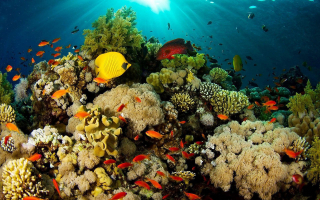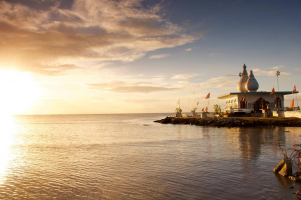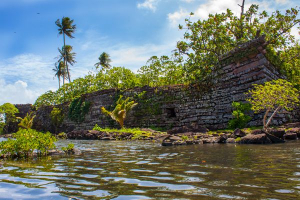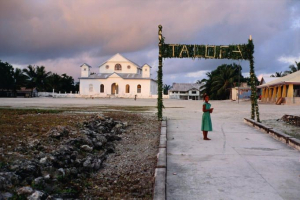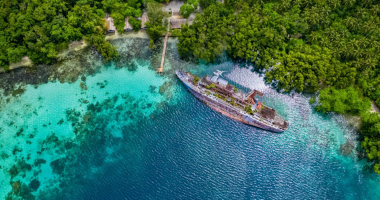Top 10 Most Beautiful Historical Sites in Japan
Japan has a fascinating history that is both long and complex. Despite technological advances, Japan's traditional customs and traditions are still very much ... read more...alive in its culture and in the minds of its people. One of the greatest ways to get to know the country is to visit these historical landmarks in Japan, where you may learn more about the nation's and its people's history and culture. Here are the 10 most beautiful historical sites in Japan.
-
Meiji Shrine is a Shinto shrine in Shibuya, Tokyo, dedicated to Emperor Meiji and his wife, Empress Shken's deified spirits. The emperor's grave, which is located in Fushimi-momoyama, south of Kyoto, is not included in the shrine.
The Japanese Diet enacted a resolution commemorating the emperor's contribution to the Meiji Restoration after his death in 1912. The building's site was chosen as an iris garden in a Tokyo neighborhood frequented by Emperor Meiji and Empress Shken.
The temple was created in the traditional nagare-zukuri style, utilizing predominantly Japanese cypress and copper, and began construction in 1915 under It Chta. The shrine's construction was a national initiative that brought together youth clubs and other civic organizations from all around Japan to donate work and funds. Materials were sourced from every Japanese prefecture, including Karafuto, Korea, Kwantung, and Taiwan, with the major timbers coming from Kiso in Nagano and Alishan in Taiwan, which was then a Japanese colony. The building cost was expected to be $5,219,00 in 1920 (about US$26 million now), less than a fifth of the actual cost thanks to donated materials and labor.
Meiji Shrine was formally dedicated on November 3, 1920, and was completed in 1921, with the gardens completed in 1926. When it was first built, the shrine complex had an interior volume of 650 tsubo. Until 1946, the Meiji Shrine was formally designated as a Kanpei-taisha, which meant it was on the list of government-sponsored shrines.
Numerous foreign officials have visited Meiji Shrine, including US President George W. Bush, US Secretary of State Hillary Clinton, and German Foreign Minister Guido Westerwelle.
Location: 1-1, Kamizono-chō, Yoyogi, Shibuya, Tokyo 151-0053

planetofhotels.com 
loving-tokyo.com -
Sensō-ji is an ancient Buddhist temple in the Asakusa neighborhood of Tokyo, Japan. It is one of Tokyo's oldest and most important temples. It used to be affiliated with the Tendai Buddhist sect, but after World War II, it became autonomous. A five-story pagoda, the Asakusa Shinto shrine, lies adjacent to the temple, as are many stores selling traditional products in the Nakamise-dri.
With over 30 million people each year, the Sensō-ji temple is the most frequented spiritual destination in the world, devoted to Kannon Bosatsu, the Bodhisattva of Compassion. The temple's roof is made of titanium tiles, which maintains the temple's traditional appearance while also being stronger and lighter.
The bodhisattva Kannon (Avalokitevara) is honored in this temple. According to folklore, two fishermen, Hinokuma Hamanari and Hinokuma Takenari, discovered a Kannon statue in the Sumida River around 628 AD. Hajino Nakamoto, the local chief, acknowledged the statue's holiness and enshrined it by converting his home into a modest temple in Asakusa where the villagers might worship Kannon.
The original temple was built in 645 AD, making it Tokyo's oldest temple. Tokugawa Ieyasu named Sensō-ji the Tokugawa clan's tutelary temple during the Tokugawa shogunate's early years.
During World War II, during the 10 March air raid on Tokyo, the temple was bombed and destroyed. It was afterward reconstructed and is regarded by the Japanese as a symbol of rebirth and peace. A tree that was hit by a bomb during the air raids in the courtyard has regrown in the husk of the old tree and is a symbol of the temple itself.
Location: 2-3-1 Asakusa, Taitō-ku, Tokyo, Japan

tokyocheapo.com 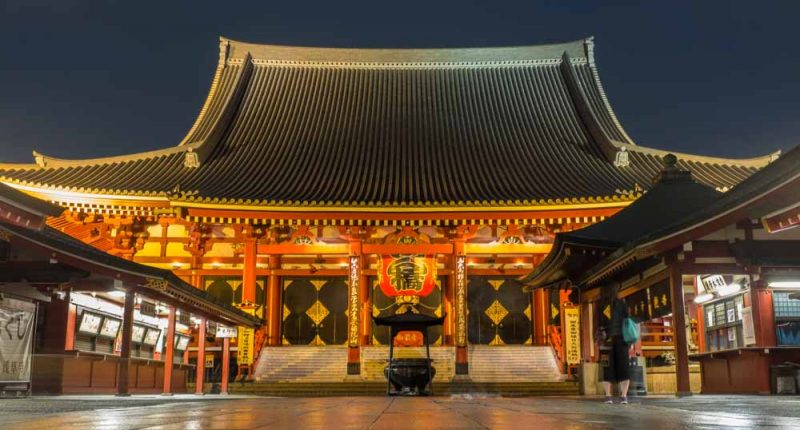
japanistry.com -
Kinkaku-ji is a Zen Buddhist temple in Kyoto, Japan, officially known as Rokuon-ji (literally "Deer Garden Temple"). It is one of the most popular buildings in Kyoto, attracting a large number of visitors each year. It is a National Special Historic Site, a National Special Landscape, and one of 17 World Heritage Sites that comprise the Historic Monuments of Ancient Kyoto.
The temple, formally known as Rokuonji, was the retirement home of the shogun Ashikaga Yoshimitsu, and following his death in 1408, it became a Zen temple of the Rinzai sect according to his will. Kinkaku-ji inspired the similarly called Ginkakuji (Silver Pavilion), which was built on the other side of the city a few decades later by Yoshimitsu's grandson, Ashikaga Yoshimasa.
Kinkaku-ji, the lone building remaining from Yoshimitsu's former retirement compound, is an outstanding temple erected overlooking a big pond. It has burned down several times throughout its history, most notably in 1950 when it was set on fire by a fanatical monk during the Onin War, a civil war that destroyed most of Kyoto. The current structure was constructed in 1955.
Kinkakuji was created to reflect the opulent Kitayama culture that flourished in Kyoto's wealthy aristocratic circles during Yoshimitsu's reign. Each floor symbolizes a different architectural style.
The first floor is built in the Shinden style, which was popular for royal buildings during the Heian Period, and its natural wood pillars and white plaster walls contrast but enhance the pavilion's gilded upper stories. On the first floor, there are statues of Shaka Buddha (historical Buddha) and Yoshimitsu.
The second floor is built in the Bukke style, which is popular in samurai homes, and its outside is fully covered in gold leaf. Inside, there is a seated Kannon Bodhisattva surrounded by statues of the Four Heavenly Kings, although the statues are not visible to the public. Finally, the third and highest floor is designed in the form of a Chinese Zen Hall, is gilded both inside and out, and is topped with a golden phoenix.
Visitors passing by the head priest's former dwelling quarters noted for its painted sliding doors but not open to the public, after viewing Kinkakuji from across the pond. The trail then passes behind Kinkakuji and leads through the temple's gardens, which have been restored to their original design from Yoshimitsu's time. Other attractions in the gardens include Anmintaku Pond, which is supposed to never dry up, and sculptures to which visitors throw coins for good luck.
Location: 1 Kinkakuji-chō, Kita-ku, Kyōto, Kyoto Prefecture, Japan

worldhistory.org 
japan-guide.com -
The Kyōto Imperial Palace was the Emperor of Japan's previous royal palace. The Emperors have resided at the Tokyo Imperial Palace since the Meiji Restoration in 1869, while the Kyoto Imperial Palace was ordered preserved in 1877. The grounds are now available to the public, and the Imperial Household Agency offers tours of the buildings many times a day.
The Kyōto Imperial Palace is the most recent of the imperial palaces built at or near its site in the northeastern portion of Heian-ky (now known as Kyoto) following the abandonment of the larger original Heian Palace, which was located to the west of the current palace during the Heian period. When the capital activities were relocated to Tokyo in 1869 during the Meiji Restoration, the Palace lost much of its function. Emperor Taisho and Showa, on the other hand, had their enthronement rites at the palace.
The Palace sits in the Kyoto-gyoen, a vast rectangular enclosure measuring 1,300 meters (4,300 feet) north to south and 700 meters (2,300 feet) east to west. It also houses the gardens of the Sent Imperial Palace and the Kyoto State Guest House. The estate dates from the early Edo period, when prominent court aristocrats lived close to the palace and the region was walled off. When the capital was relocated to Tokyo, the houses of the court nobility were razed, and the majority of Kyoto Gyoen is now a public park.
The Shishinden (Hall for State Ceremonies), Seiryden (Emperor's Habitual Residence), Kogosho (Court Room), Ogakumonjo (Imperial Study or Library), and a variety of mansions for the Empress, high-ranking aristocrats, and government officials are among the main buildings.
Location: 3 Kyotogyoen, Kamigyo Ward, Kyoto, 602-0881, Japan

sase.org 
flickr.com -
Kiyomizu-dera is a Buddhist temple in the eastern part of Kyoto, Japan. The temple is part of the UNESCO World Heritage site Historic Monuments of Ancient Kyoto (Kyoto, Uji, and Otsu Cities).
Kiyomizu-dera was established during the early Heian period. Sakanoue no Tamuramaro erected the temple in 778, and Tokugawa Iemitsu had the current buildings to be built in 1633. In the entire construction, not a single nail is used. It gets its name from a waterfall within the complex that flows down from the adjacent hills. Kiyomizu is Japanese for "clear water" or "clean water."
Kiyomizu-dera is situated in the foothills of Mount Otowa, which is part of the Higashiyama mountain range, which overlooks eastern Kyoto. The main hall features a huge veranda supported by towering pillars that jut out over the hillside and provides stunning views of the city. During the Edo period, several prominent pilgrimage destinations built enormous verandas and major halls to accommodate big crowds.
Several other shrines are located within the temple complex, including the Jishu Shrine, which is devoted to Kuninushi, a god of love and "excellent matches." Jishu Shrine has a pair of "love stones" that are 10 meters (30 feet) apart and can be walked between by lonely visitors with their eyes closed. The pilgrim's success in reaching the other stone with their eyes closed indicates that they will discover love or true love. The Otowa waterfall is located beneath the main hall and consists of three waterfall channels that flow into a pond. Visitors can catch and drink the water, which is said to grant wishes.
The complex also sells talismans, incense, and omikuji (paper fortunes). During festivals (notably New Year's and obon in the summer), more vendors cover the grounds, selling traditional holiday dishes and souvenirs to swarms of tourists. Kiyomizu-dera was one of 21 finalists for the New Seven Wonders of the World in 2007 but was not chosen as one of the seven winning locations.
Location: Higashiyama-ku, Kyoto, Japan
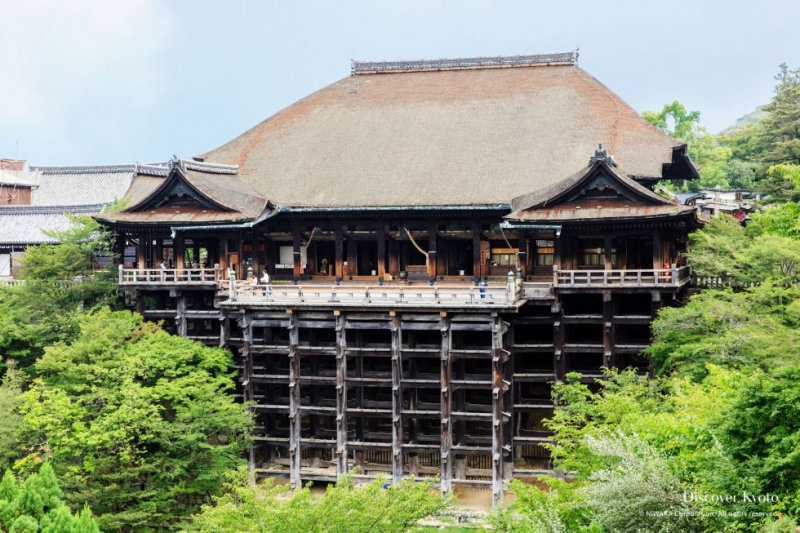
discoverkyoto.com 
travel.gaijinpot.com -
Hiroshima Peace Memorial Park is located in the heart of Hiroshima, Japan. It is devoted to Hiroshima's legacy as the world's first city to suffer a nuclear strike at the close of World War II, as well as the memories of the bomb's direct and indirect victims (of whom there may have been as many as 140,000).
Every year, almost one million individuals visit the Hiroshima Peace Memorial Park. The park is dedicated to the victims of the August 6, 1945, nuclear strike in which the United States dropped an atomic bomb on the Japanese city of Hiroshima. The Japanese Architect Kenz Tange of Tange Lab developed and created the Hiroshima Peace Memorial Park.
Hiroshima Peace Memorial Park was previously located in the city's busiest core commercial and residential zone. The park was constructed on an open area left by the explosion. There are now over a million visitors every year visiting memorials and monuments, museums, and lecture halls. The park also hosts the annual 6 August Peace Memorial Ceremony, which is sponsored by the city of Hiroshima. The Peace Memorial Park's mission is to not only remember the victims of the attack but also to preserve the memory of nuclear horrors and promote world peace.
Hiroshima Peace Memorial Park ranks sixth in our list of the most beautiful historical sites in Japan.
Location: Hiroshima, Japan
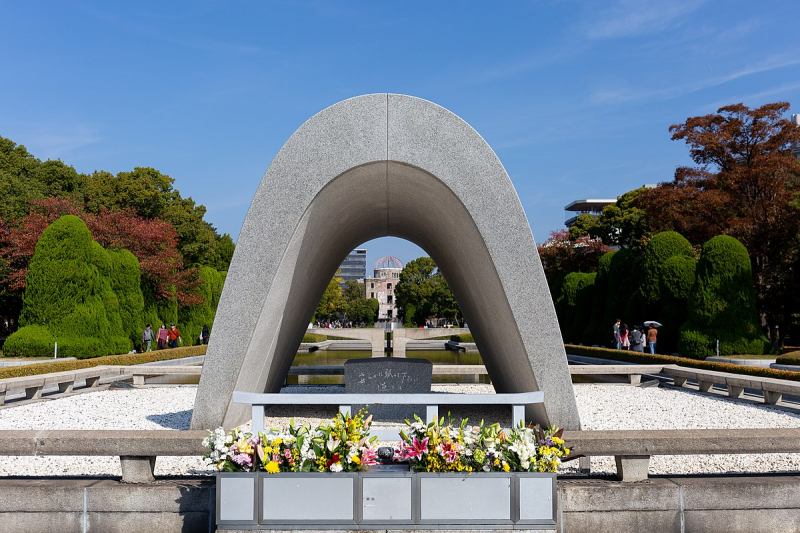
en.wikipedia.org 
justgola.com -
Nikkō Tōshō-gū is a Tōshō-gū Shinto temple in the Japanese town of Nikk, Tochigi Prefecture. Nikkō Tōshō-gū is part of the Shrines and Temples of Nikkō UNESCO World Heritage Site, together with Futarasan Shrine and Rinnō-ji, with 42 shrine structures included in the nomination. Five of them have been classified as Japanese National Treasures, and three more as Important Cultural Properties.
Tōshō-gū honors Tokugawa Ieyasu, the founder of the Tokugawa shogunate. It was first constructed in 1617, during the Edo era, while Ieyasu's son Hidetada was shōgun. During the reign of the third shōgun, Iemitsu, it was expanded. Ieyasu is enshrined there, and his remains are also interred there. Tōdō Takatora, a Tokugawa retainer, established this shrine.
The Tokugawa shogunate led a dignified procession from Edo to the Nikkō Tōshō-gū via the Nikkō Kaidō during the Edo period. The shrine's annual spring and autumn festivals, dubbed "processions of a thousand warriors," recreate these events. The Cedar Avenue of Nikkō, a row of towering trees along the street, adds to the charm.
Five structures at Nikkō Tōshō-gū are designated as National Treasures of Japan, while three more are designated as Important Cultural Properties. Furthermore, two swords in the shrine's possession are National Treasures, and numerous other objects are Important Cultural Properties. The beautifully adorned Ymeimon, also known as "higurashi-no-mon," is one of the Tōshō-gū's most famous structures.
The latter moniker implies that one could stare at it till dusk and never get tired of it. The surface of the tower is decorated with deep relief carvings painted in vibrant hues. The karamon with white embellishments is the next gate. A woodcarving of a drowsy cat, "Nemuri-neko," credited to Hidari Jingor, stands nearby.
The first five-story pagoda was provided by a daimyō in 1650, but it was destroyed in a fire in 1818 and rebuilt. In ascending order, each story represents an element–earth, water, fire, wind, and aether (or emptiness). A central shinbashira pillar hangs from chains inside the pagoda to reduce seismic damage. Hundreds of stone steps lead through the cryptomeria forest to Ieyasu's grave. At the summit of the torii is calligraphy attributed to Emperor Go-Mizunoo. Tokugawa Ieyasu's remains are kept in a bronze urn.
Location: 2301 Sannai, Nikko, Tochigi Prefecture, Japan

en.wikipedia.org 
en.wikipedia.org -
Osaka Castle is a Japanese castle located in Chūō-ku, Osaka, Japan. The castle is one of the most beautiful historical sites in Japan, and it played an important role in Japan's unification during the Azuchi-Momoyama period in the sixteenth century.
The construction of Osaka Castle began in 1583 on the former site of the Ishiyama Honganji Temple, which had been destroyed thirteen years before by Oda Nobunaga. Toyotomi Hideyoshi envisioned the castle as the focal point of a new, unified Japan under Toyotomi's authority. It was the largest castle in the world at the time.
Tokugawa troops stormed and demolished the castle a few years after Hideyoshi's death, effectively ending the Toyotomi lineage in 1615. Tokugawa Hidetada erected Osaka Castle in the 1620s, but its main castle tower was struck by lightning and burned down in 1665.
The current ferroconcrete rebuilding of the castle tower was not completed until 1931. It remarkably survived the city-wide air raids during the war. In 1997, major restoration work restored the castle's luster. The castle tower is now completely modern on the inside, with an elevator for easier access. It has an interesting museum about the history of the castle and Toyotomi Hideyoshi.
Secondary citadels, gates, turrets, spectacular stone walls, and moats encircle the castle tower. The Nishinomaru Park, which includes the former "western citadel", is a lawn garden with 600 cherry trees, a tea house, the former Osaka Guest House, and excellent views of the castle tower from below. The garden, unlike the rest of the castle grounds, charges an admission fee.
Osaka Castle Park encompasses around two square kilometers of green space, sports facilities, a multi-purpose arena (Osakajo Hall), and a shrine dedicated to Toyotomi Hideyoshi. During the cherry blossom season, which normally occurs in early April, the park is one of Osaka's most popular hanami places.
Location: Chūō-ku, Osaka, Japan

silverkris.com 
afar.com -
Nagasaki Peace Park is a park in Nagasaki, Japan, that commemorates the city's atomic explosion on August 9, 1945, during World War II. It is located near the Peace Memorial Hall and the Atomic Bomb Museum.
Urakami Cathedral was built in 1955, and fragments of a concrete wall can still be seen near the hypocenter of the explosion. At the time, Urakami Cathedral was the largest church in East Asia. The 10-meter-tall Peace Statue, sculpted by Nagasaki Prefecture sculptor Seibo Kitamura, stands at the park's northern edge. The right hand of the statue represents the threat of nuclear bombs, while the outstretched left hand represents eternal peace. The gentle expression represents divine grace, and the gently closed eyelids are a prayer for the souls of the bomb victims. The folded right leg and extended left leg represent both meditation and the initiative to get up and save the world's people. The statue combines western and eastern art, religion, and ideology. A black marble vault in front of the statue contains the names of the atomic bomb dead and survivors who died in the years that followed.
Every year on the 9th of August, the anniversary of the atomic bombing, a Peace Memorial Ceremony is conducted in front of the statue, and Nagasaki's Mayor presents a Peace Declaration to the World.
A "Fountain of Peace" may be found at the park's southern end. This was built in August 1969 as a prayer for the spirits of the many atomic bomb victims who died while looking for water, as well as a devotion to world peace. A black stone plaque in front of the fountain bears lines from a poem written by Sachiko Yamaguchi, who was nine at the time of the bombing.
Location: Nagasaki, Japan
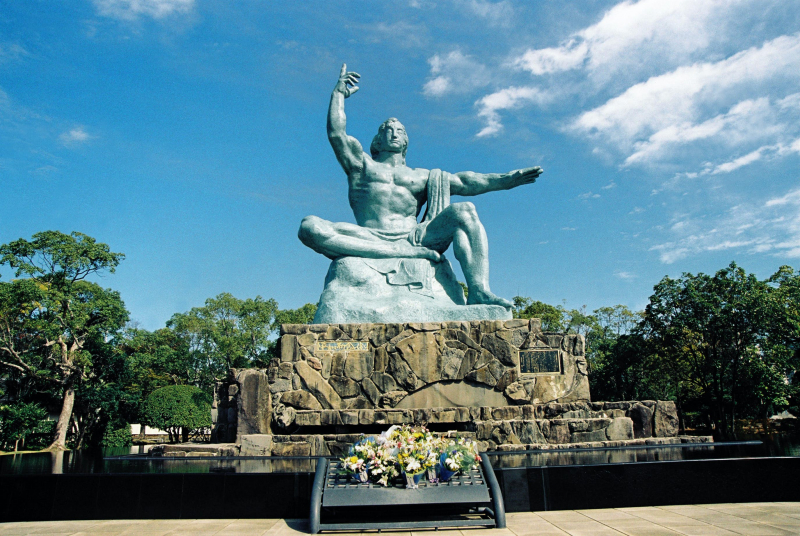
lonelyplanet.com 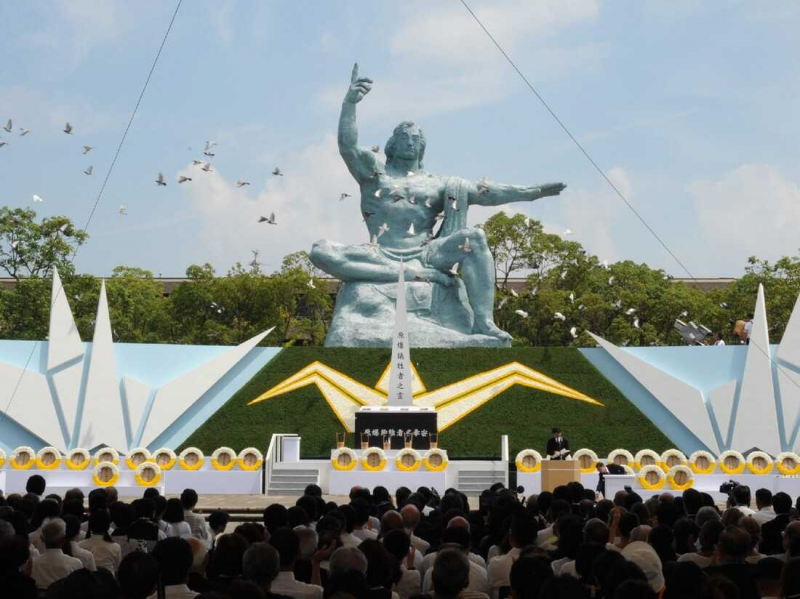
npr.org -
Fukuoka Castle is a Japanese castle in the Japanese city of Fukuoka. Maizuru Castle and Seki Castle are two other names for it. The Japanese government declared it a historic landmark when it was completed in the early Edo period for tozama daimy Kuroda Nagamasa.
Fukuoka Castle is located on the top of Fukusaki hill in the heart of Fukuoka. The Naka River, or Nakagawa in Japanese, serves as a natural moat on the castle's eastern side, while a mudflat serves as a natural moat on the castle's western side. Hakata, a busy port ward, is located on the opposite bank of the Naka River to the east. The castle town was built on the northern side of the island, facing the sea.
Maizuru Park, which houses many sports facilities, a courtroom, and an art museum, has taken up much of the castle grounds. The castle grounds also housed Heiwadai Baseball Stadium, the former home of the Nishitetsu Lions and Fukuoka Daiei Hawks. Some of the castle's gates, as well as its towers and turrets, known as yaguras, are retained within the park, one of which has been designated by the Japanese government as an important historical artifact.
In 1987, the remains of a korokan, an ancient guest house for foreign diplomats, were unearthed beneath the castle grounds, demonstrating that the castle served as an important geographical post even during the Heian period. This is the only korokan relic unearthed in Japan.
Fukuoka Castle ranks tenth in our list of the most beautiful historical sites in Japan.
Location: Chuo-ku, Fukuoka Prefecture, Fukuoka City, Japan

yabai.com 
en.wikipedia.org













